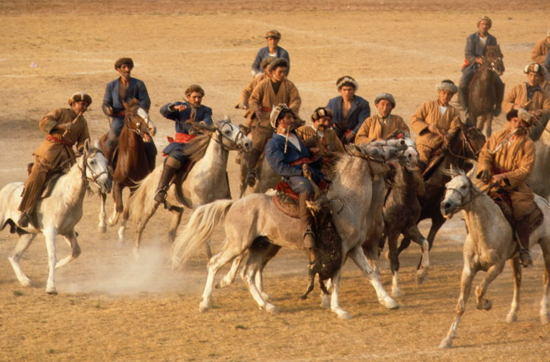Login form
Customs of Afghanistan
 Marriage and Family
Marriage and Family
Teenage girls adopt pardah—a system in certain Muslim societies involving the seclusion or screening of women from men who are not close family members—and have no contact with men outside the immediate family.
Marriages are normally arranged, often with the senior women of the families playing a prominent role in the decision. Among urban or more Westernized families, it was sometimes permissible for a prospective bride and groom to meet with or view each other and approve of or reject the union. Marriages between cousins are common and often preferred, as they strengthen family ties. Matchmakers engage in lengthy negotiations over the bride-price and dowry.
Marriage and engagement rituals are numerous, varied, and complex. Traditionally, the ceremony itself occurs over a three-day period, with some of the festivities at the bride’s family home and some at the groom’s. Most activities occur with the sexes segregated, but all gather for the signing of the marriage contract and recitation of the Qur’an. Divorce is simple—the man need only announce it in public three times—but rare. A man may have up to four wives, but he must provide for each equally; this limits most men to one wife. Premarital and extramarital sex are strictly forbidden and can be grounds for severe punishment (including death) in some areas.
Life in
Afghans identify primarily with their family, kin group, clan, or tribe. Afghans in rural areas tend to define wealth as land ownership or a large family. Urban residents are more likely to view wealth in terms of money or possessions, and education is highly valued. Nomadic people define wealth by the size of their herds. Jewelry is regarded as a portable form of wealth—women's clothing and veils keep valuables largely hidden.
Eating
Afghan cuisine is influenced by the foods of South and Central Asia,
Afghans in rural areas commonly eat only breakfast and dinner, but some may have a light lunch. Most have snacks between meals. At meals, Afghans usually sit on the floor around a mat on which food is served in a communal dish. To eat, one uses the fingers of the right hand or a piece of nan. The left hand is never used to serve oneself, as it is traditionally reserved for personal hygiene. One eats until satisfied, and leftover food is saved for later or for the next day’s breakfast. Families normally eat together, but if a male guest is present, females eat separately. Most Afghans do not eat at restaurants, which sometimes have a separate dining area or booths for families.
Socializing
A handshake is a common greeting among men, who tend to be expressive when greeting friends and may pat one another on the back during an embrace or lightly kiss their friends on alternate cheeks. Formal verbal greetings are often accompanied by placing the right hand over the heart. Women friends embrace each other and kiss three times on alternate cheeks. Women might also shake hands. A man does not shake hands with or otherwise touch a woman in public, although he may greet her verbally in an indirect way.
Greetings vary by region and ethnic group, but Arabic greetings are used and universally accepted. Assalaam alaikum (“Peace be upon you”) is replied to with Waalaikum assalaam (“And peace also upon you”). A common Dari greeting is Khūbasti? (“Are you well?”), and the Pashto equivalent is Singa ye?. “Goodbye” is Khoda hafiz.
In formal situations, an academic or professional title is always used. Hajji (“Pilgrim”) is reserved for those who have made a pilgrimage to
Visiting between family, friends, and neighbors is the main social activity in
Recreation
Traditionally, Afghans enjoy soccer, volleyball, and wrestling. Oral traditions such as storytelling and singing have flourished. Music, played on drums, lutes, and a clarinet-like instrument called a surnai, has traditionally been very popular. Most leisure activities occur in the evening and center around the family.
In buzkashi, a sport played by ethnic groups in northern
Holidays and Celebrations
The secular holidays of
Islamic holidays, which are more important, are scheduled according to the lunar calendar, and thus vary from year to year. Ramadan is a month-long fast. From sunrise to sundown, people do not eat, drink, or smoke. In the evening, after the sun has set, families and friends gather to eat and visit. The first day of Ramadan is a holiday, and at the end of Ramadan a three-day feast called Eid-e-fitr takes place.
Nauroz, the Islamic New Year, begins on the first day of spring (around 21 March). In
Buzkashi is played at this time, with hundreds of horsemen on each team. Special foods eaten in honor of the New Year include samanak, a dessert made of wheat and sugar, and haftmewah, a compote of nuts and fruits.
Other Islamic holidays include Eid-e-ada, honoring Abraham for his willingness to sacrifice his son at Allah’s command; Ashura, a Shiite day to mark the martyrdom of Imam Husayn; and Roze-Maulud, the birthday of the prophet Muhammad.
Source: Encarta Interactive World Atlas

